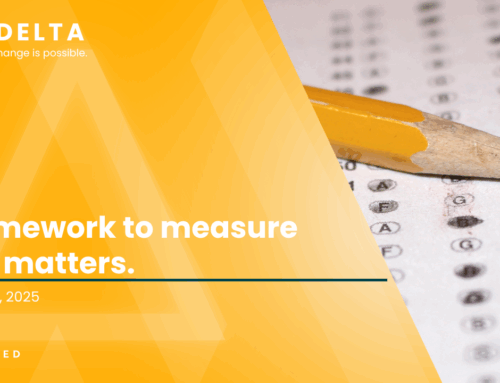The Delta Issue #47
Updates, resources, and reminders for SEAs facing the ESEA funding freeze
Hey y’all, it’s Jessica.
Last week, nearly 200 state leaders, advocates, and partners joined us for a webinar where Kunjan Narechania and Catherine Pozniak talked through how states can respond to the ongoing federal ESEA funding freeze.
Since then, a lot has happened. But before we get into all of that, let’s catch you up.
Catch Up Quick: On July 1, the U.S. Department of Education was supposed to release $6.8 billion in education grants to school districts in all 50 states. That funding was already authorized and appropriated by Congress. But the money still hasn’t moved, and USED has offered no timeline for when states or districts can expect it.
The uncertainty is mounting as districts across the country scramble to prepare for a new school year without the resources they were promised.
What’s Happened Since the Webinar
Advocates are speaking out:
- PIE Network is amplifying state leaders’ voices from across the country, and they’re now collecting stories to show how the funding delay is hurting students and schools. If you have a specific example from your state or district, you can submit it directly to Courtney Criswell at courtney@pie-network.org.
- The Colorado delegation sent a letter to Secretary McMahon demanding answers.
- More states are joining the lawsuit against the Trump administration.
- 10 Republican Senators signed a letter to the U.S. Office of Management and Budget urging them to release the funds, pointing out that “[the] decision to withhold this funding is contrary to President Trump’s goal of returning K-12 education to the states.”
New resources are emerging:
- Education Week released a searchable, state-by-state database so you can see the potential impact where you are
- Our team at Watershed Advisors put together this FY24 State-by-state breakdown of Federal Funding Streams Currently Being Reviewed by the Office of Management and Budget
- Shoutout to Colorado for creating this Heat Map that illustrates the estimated impact of the delayed funds by school district
- Mark Lieberman at Education Week continues to deliver such fantastic reporting — highlighting stories from district leaders about how the funding delays could hit their schools hardest
What States Can Do Now
This is a moment for states to lead. At Watershed, we’re here to help SEAs navigate this disruption with clarity and confidence.
Here’s a recap of what we recommended last week:
- Communicate: Keep districts in the loop with timely updates, FAQs, and a clear point of contact.
- Assess & Mitigate: Help districts surface rollover funds (blue and orange money) and prioritize high-impact expenditures.
- Maximize Flexibility: Tap into Ed-Flex authority, discretionary funds, and any state-specific tools to help districts stay afloat.
Let’s Get Muddy
We know this isn’t business as usual. The ESEA funding freeze is messy, high-stakes, and changing by the day.
But what’s been clear from the start, and what we’ve seen over and over again this past week, is that there are state leaders stepping up — and every state needs to follow their lead.
We’ll keep sharing resources, and adding our two cents, as the situation evolves.
What resources did we miss? Drop your suggestions in the comments.





